Villains
Villains in the other fighting games I’ve covered have been
of the moustache-stroking variety, always having a sinister plan and team of
badasses at their beck and call to further their goals. Mortal Kombat’s villains are very much the
same.
The primary villain of the first three Mortal Kombat games,
as well as Mortal Kombat 9, is the previously-mentioned Emperor of Outworld
Shao Kahn, a total barbarian whose only goal seems to be power, bloodshed and
conquest.
The first three games are all about Kahn trying to conquer
Earthrealm through the Mortal Kombat tournament. He jumps into the tournament’s fray
personally in Mortal Kombat 2 and when he loses that time, he circumvents the
rules of Mortal Kombat by creating a link to Earthrealm. By having his sorcerers resurrect Kitana’s
dead mother Sindel in Earthrealm, he’s allowed to travel freely there in order
to get her back, as sort of an excuse to travel the realms.
But instead he uses the freedom he’s given to invade
Earthrealm with his army of minions, leading to the events of Mortal Kombat
3. It’s like telling someone you left
your wallet in their house and proceed to wreck the place while you’re there.
He doesn’t die at the end of MK3, but he does lose
Earthrealm as well as Edenia. He’s
thought to be killed at the beginning of Mortal Kombat: Deadly Alliance when
the titular alliance backstabs him, but it’s revealed in the Gamecube version
of Mortal Kombat: Deception that they only killed a doppelganger.
For someone who looks like he could be another case of dumb
muscle, Shao Kahn can back up his intimidating strength with tactical
smarts and pragmatism. In fact, it’s
revealed in Mortal Kombat 9 that at the end of the original timeline, he wins the battle of Armageddon! He defeats Blaze and becomes the ultimate
being in the universe, leading to Raiden’s attempt to change the past!
But it helps that Kahn (initially) has some smart guys on
his side, like Shang Tsung.
Shang Tsung is a sorcerer who steals souls to maintain his
youth as well as shapeshift (depending on the game). As stated in the plot synopsis of part 1,
Shang heads the Mortal Kombat tournament of the first game, the one that would
decide whether or not Outworld would be allowed to take Earthrealm. In order to truly win, the champion of Mortal
Kombat has to defeat both him and the previous champion, Goro.
 |
| No. |
 |
| Yeah, him.. The one with 4 arms, not the skull. |
Goro is the prince of a four-armed part-dragon race called
the Shokan. Before the events of the
first game, Goro killed the previous Kung Lao in the tournament while acting as
champion. After his defeat at Liu Kang’s
hands in the first game, Goro starts living up to his title of prince by
leading the Shokan against their archenemies, the Centaurs, one of whom Shao
Kahn takes in as the general of his invasion force. That would be Motaro, the penultimate boss of
Mortal Kombat 3.
In Mortal Kombat 2, Goro’s cousin Kintaro enters the
Outworld tournament to kill the Earthrealm Warriors who humiliated the prince
of the Shokan.
Kintaro and Motaro are not important.
After losing in the first tournament, Shang gives Shao Kahn
the idea of the Outworld tournament in a desperate plea for Kahn to spare him
from execution. To aid
in the effort, Kahn gives him his youth back, then when Shang helps bring
Sindel back, Kahn gives him even more power.
Once his master is thoroughly defeated, Shang teams up with
Quan Chi, whose master was also defeated, to set the events of Mortal Kombat:
Deadly Alliance in motion.
Quan Chi is a sorcerer of the Netherrealm, Mortal Kombat’s
firey version of hell. He originally
appears in the previously-mentioned prequel Mortal Kombat Mythologies:
Sub-Zero, where he tricks the title character into releasing his master
Shinnok, who across the three games he’s been in tries to seize the realms for
himself.
Technically Quan Chi originally appeared in the Mortal
Kombat animated series, but we don’t talk about that. He does get a much more expanded role in
Mortal Kombat 9’s alternate timeline, where he’s the one who resurrects Sindel,
among other things.
With the help of the elder Sub-Zero, Quan Chi successfully
revives Shinnok using an amulet with god-like powers not unlike Raiden’s, but
once that was taken away Shinnok’s power seems to destabilize and make him
vulnerable. Or rather, it… Turns him
into this:
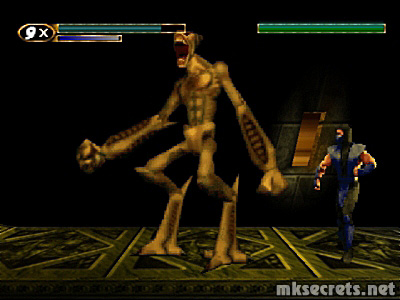 |
| I don't know why either. |
The amulet is more of a macguffin than it initially appears
to be. After Quan Chi forms the deadly
alliance with Shang Tsung (and backstabs him later), it’s revealed that
Shinnok’s amulet is one of seven mystical artifacts called he Kamidogu, which when
gathered is said to grant unlimited power.
Not to be confused with the Chaos Emeralds.
The mighty Dragon King Onaga, the villain of Deception, is
brought back by using the power of the first six Kamidogu he tricked Shujinko
into gathering. The Kamidogu give him
his power and Reptile, an assassin of Kahn’s from a reptile-like race called
the Saurians, acts as his new body.
Onaga was the ruler of Outworld before Shao Kahn usurped his
throne. He’s the one who owns the
mummified army Shang and Quan try to revive in Deadly Alliance and supposedly
he’s the dragon logo of the entire franchise.
I don’t see the resemblance there, but I do love Onaga’s visual
design. He resembles a gladiator-styled
monster like Kahn, but with fancier accessories to suggest royalty and all the
features of a dragon to emphasize his power.
Onaga’s ultimate goal in Deception is to try and use all
seven Kamidogu to merge and conquer all the realms for himself. This is made easier for him, as he has the
power to raise the dead, which is what truly made his army so legendarily
invincible.
But there’s a greater threat afoot. Deception is very vague about it, but Onaga
is apparently being influenced by an unseen villain known only as the One
Being. The One Being is the singularity
of all the realms and a god on its own, as it existed alongside the Elder Gods
at the beginning of time. The elder gods
split the One Being’s existence into the many different realms and trapped its
essence inside the Kamidogu.
Supposedly it’s the One Being’s mental influence that’s
making Kahn and Onaga want to merge the realms (and gain the Kamidogu’s power,
in Onaga’s case). With the realms back
together and the One Being’s essence back where it belongs, it would regain its
omnipotence.
Or so I assume. The
One Being has yet to be expanded upon in any of the Mortal Kombat games. It’s barely mentioned in Deception and only
once in Armageddon. I almost think the
writers forgot about it, but people interpret certain details of Mortal Kombat
9’s story as signs that they haven’t.
With the hints they give to the One Being you think it’d be
the final villain of Mortal Kombat: Armageddon in some form, but instead Armageddon’s
primary foe (no counting Daegon, mentioned in part 1), is Blaze.
Blaze is a fire elemental created by an Edenian sorceress
(Daegon & Taven’s mom) to oversee the other fighters and kill them when
necessary to prevent an imbalance of power that would lead to the Armageddon
she foresaw.
But along the way Blaze is kidnapped by worshippers of Onaga
and forced into protecting his egg. By
the time he breaks free of his binding, the number of fighters is out of
control, Daegon is prematurely awakened and the world is headed toward
Armageddon.
So, to reduce their numbers and get them all in one place,
Blaze lures all the fighters into a battle royale with the promise of his
godlike power to the ultimate victor that can defeat him.
The reason there are so many fighters Blaze has to kill off
is incredibly ironic: No one dies in
Mortal Kombat! Anyone who died
either comes back to life or is revealed to have not died at all. This is especially the case in Armageddon,
where every single character from the main games (and some spinoffs) comes
back, many with little to no explanation!
You would think a game franchise infamous for its fatalities
would have actual fatalities, but
no! They’re fine! Never mind they got their spine ripped out or
head smashed into a dozen chunks!
They’ll just come back later!
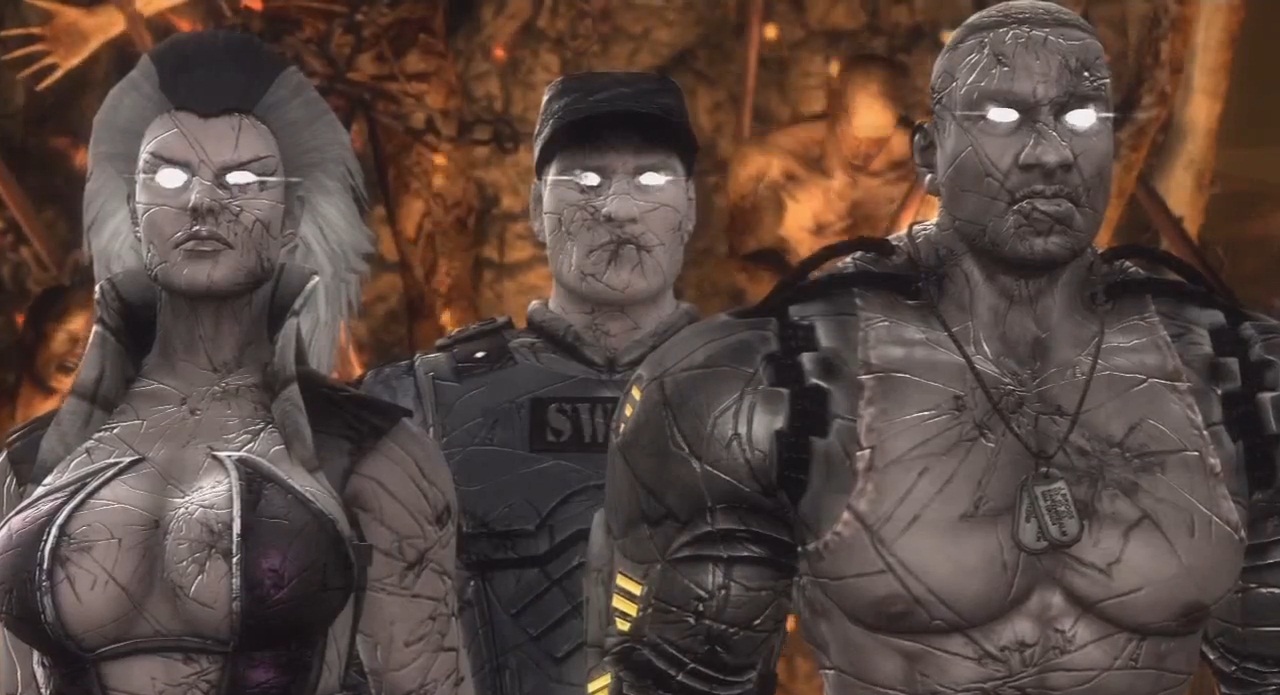 |
| Zombies. |
Or the writers will completely hit the reset button with time travel. That works too.
The way the villains keep coming back and breaking the rules
actually plays into Mortal Kombat’s trademark violence pretty well as a
theme. Unlike the other fighting games,
where there are villains the hero inevitably defeats, the villains of Mortal
Kombat don’t play fair and are such conniving greedy bastards they make it seem
like there’s no point trying to deal with them, particularly starting with
Deadly Alliance.
When Kahn loses the second tournament, he breaks the rules
to invade anyway. Later, Liu Kang gets
killed by villains that were already supposed to be beaten, and said villains
betray Shao Kahn and each other. Raiden
eventually becomes a cynical human hater and in the end of the original
timeline, the bad guy wins!
Japanese-developed games that take place in friendly competition, the
violence of Mortal Kombat shows that the two fighters are really trying to kill
each other and that it’s less for spectacle (story-wise, anyway).
For detail on what I mean, I highly recommend reading Mark Fillipowich’s article on the subject.
It’s a very good read.
The Other Guys
Outside of the main heroes and villains, along with their
many allies I haven’t detailed, are characters that fight the villains for
their own sake. There are fighters with
bones to pick with the threat of each game, like the blind swordsman Kenshi,
escaped slave Li Mei and demon slayer Ashrah.
Others struggle with their own interpersonal conflicts
outside of the primary battle against the Outworld invaders. Deception introduced a conflict of order
versus chaos with two realms based on each side: Orderrealm and
Chaosrealm. Orderrealm is authoritarian
and controlling, with authorities like the zealous knight Hotaru. Chaosrealm is all about disorder and anarchy,
as demonstrated by its cleric, Havik.
 |
| He's so chaotic he snaps his own neck to HEAL! |
A lot also happens on the side with regards to the Black
Dragon Clan I mentioned in part 1. As
stated before, Kano
is the original leader of the Black Dragon Clan. After Kano
is imprisoned, and eventually hired by, Shao Kahn, the gang falls apart with
only stragglers, such as the Earthrealm warrior Kabal from Mortal Kombat 3, who
resigned from the Black Dragon clan.
But Deadly Alliance introduced a new enemy, the Red Dragon
Clan. The Black Dragon clan turns out to
have been an organization of some of the Red Dragon Clan’s members that split
off from the main group. In a vendetta
against the traitors, the leader, Mavado, hunts down every last one of
them. He nearly kills Kabal and takes
his hookswords, which, after being saved and persuaded by Havik into reviving
the Black Dragon Clan, Kabal takes back in Deception.
In Deadly Alliance, the (supposedly) only Black Dragon Clan
member Mavado has yet to kill is Kano ,
which the Deadly Alliance gives him in exchange for fighting Kenshi for them.
To keep the Outworld Investigation Agency from interfering,
Mavado also sends his most trusted member undercover to sabotage them from
within and lead them toward the Black Dragon Clan stragglers. That member is Hsu Hao, the most remembered and beloved fighter in Kamp Kombat.
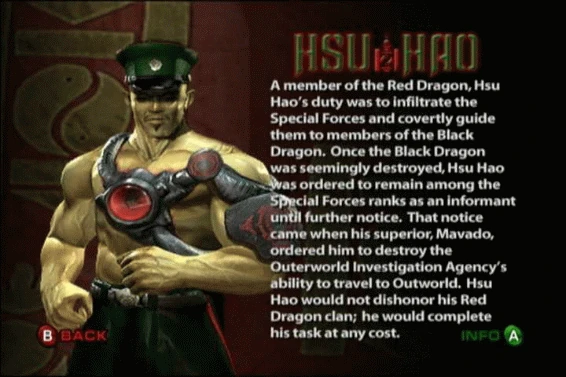 |
| Inconspicuous. |
I look forward to seeing him in Mortal Kombat X.
Other not-important characters include the vampiress Nitara, Orderrealm rebel Darrius and the two Black Dragon Clan recruits Kabal finds, Kobra and Kira.
 |
| And there he goes. |
Other not-important characters include the vampiress Nitara, Orderrealm rebel Darrius and the two Black Dragon Clan recruits Kabal finds, Kobra and Kira.
Outside them are bonus characters. Mortal Kombat has a habit of adding a few
extra fighters with no plot relevance, oftentimes based on a glitch or a joke
of some kind, which highlights the humor.
Despite how bleak they are, the Mortal Kombat games have
always had a good sense of humor by having various goofy additions and Easter
eggs that are all the more funny by the stark contrast to the grisly violence.
Such goofiness includes babalities, friendship finishers,
minigames where characters are rendered in cute chibi forms, parody images and
the straight-faced way the franchise always replaces the letter “C” with “K” if
it makes the “K” sound. Mortal Kombat 9
adds some silly modifiers too, like armless kombat and rainbow blood.
The babalities in MK 9 are brilliant.
The very conception of the character Ermac is a good example
of how out-of-context their humor can be.
Originally, Ermac was a rumored character in the first game who wore a
red outfit instead of Scorpion and Sub-Zero’s yellow and blue. The rumor started when people got a glimpse of the debug menu of the original Mortal Kombat. Ermac's name was listed under "Reptile Battle", which led to people grouping the name with the secret character Reptile, thus assuming that this "ERMAC" was also a secret character. At some point people got it in their heads that this other secret character had a red garb, presumably because it was the only unused basic color for the outfit. After a gaming magazine ran a doctored screenshot supposedly showing him, the rumors got even crazier.
But in truth, "ERMAC" was simply short for an "error macro." This hidden character everyone went wild over did not exist and was only a glitch in the game's code. The devs even denied Ermac's existence in Mortal Kombat 2 with a jumbled message that, when properly spelled, read "Ermac does not exist."
But thanks to the developer’s fondness of their audience’s ideas, Ermac was made into a real character in the updated version of Mortal Kombat 3 as a legion of souls in human form enslaved by Shao Kahn. After Kahn’s defeat, Ermac then taught Kenshi telekinesis and helped fight Onaga. In Mortal Kombat 9, they (everyone refers to it as the many souls that it is) get much more screentime.
But in truth, "ERMAC" was simply short for an "error macro." This hidden character everyone went wild over did not exist and was only a glitch in the game's code. The devs even denied Ermac's existence in Mortal Kombat 2 with a jumbled message that, when properly spelled, read "Ermac does not exist."
But thanks to the developer’s fondness of their audience’s ideas, Ermac was made into a real character in the updated version of Mortal Kombat 3 as a legion of souls in human form enslaved by Shao Kahn. After Kahn’s defeat, Ermac then taught Kenshi telekinesis and helped fight Onaga. In Mortal Kombat 9, they (everyone refers to it as the many souls that it is) get much more screentime.
The character Skarlet has almost the exact same
history. She was originally a glitch
made from the mixed colors of the three color-swapped female fighters in Mortal
Kombat 3. In Mortal Kombat 9, she was
released as DLC and is a servant of Shao Kahn made entirely of blood, who
absorbs the stuff to get stronger.
And on top of characters made from rumors, Mortal Kombat has
its share of joke characters, like Meat, the basic skeleton used for characters
in Mortal Kombat 4, and my favorite, Mokap, a normal man based on the dev’s
motion capture actor.
Even Blaze was originally a background character in Mortal
Kombat 2, and though not treated as a joke, it should be noted that there is
a purple-garbed character named Rain, who is an Edenian prince.
The meta humor gives the Mortal Kombat games an air of self-awareness
more subtle than goofy slapstick with Dan Hibiki or Bang Shishigami. That along with the signature violence itself
somewhat demonstrates Mortal Kombat’s western roots.
You may notice that in previous games covered in this
article series there’s little to no blood, instead opting for exaggerated and
colorful effects to show impact. That’s
because unlike anime, games in Japan
are strict on violence and often censored.
For example, in the Japanese version of No More Heroes, the geysers of
high pressure blood from the American version is instead black particle
effects.
Also, in the Naruto games he appears in, Hidan’s signature
move, in which he impales himself, isn’t shown, nor is any blood even though
that’s what he uses to perform it.
Even Madworld, a game made
in Japan ,
wasn’t sold there due to its violence.
You would never see a game the likes of Mortal Kombat come out of Japan , which is
good, for the sake of diversity. We
can’t always have the shonen pretty boys with bright and colorful super
moves. It’s a shame that Mortal Kombat
is one of the only continuing fighting game franchises to come out of America
outside of Skullgirls and Killer Instinct.
The rest are… Well…
Keep posted for part 3, where I’ll finish up with the game’s music, combat, my personal fighter of choice and the best the series has to offer. Let’s see how long it takes to write that one.



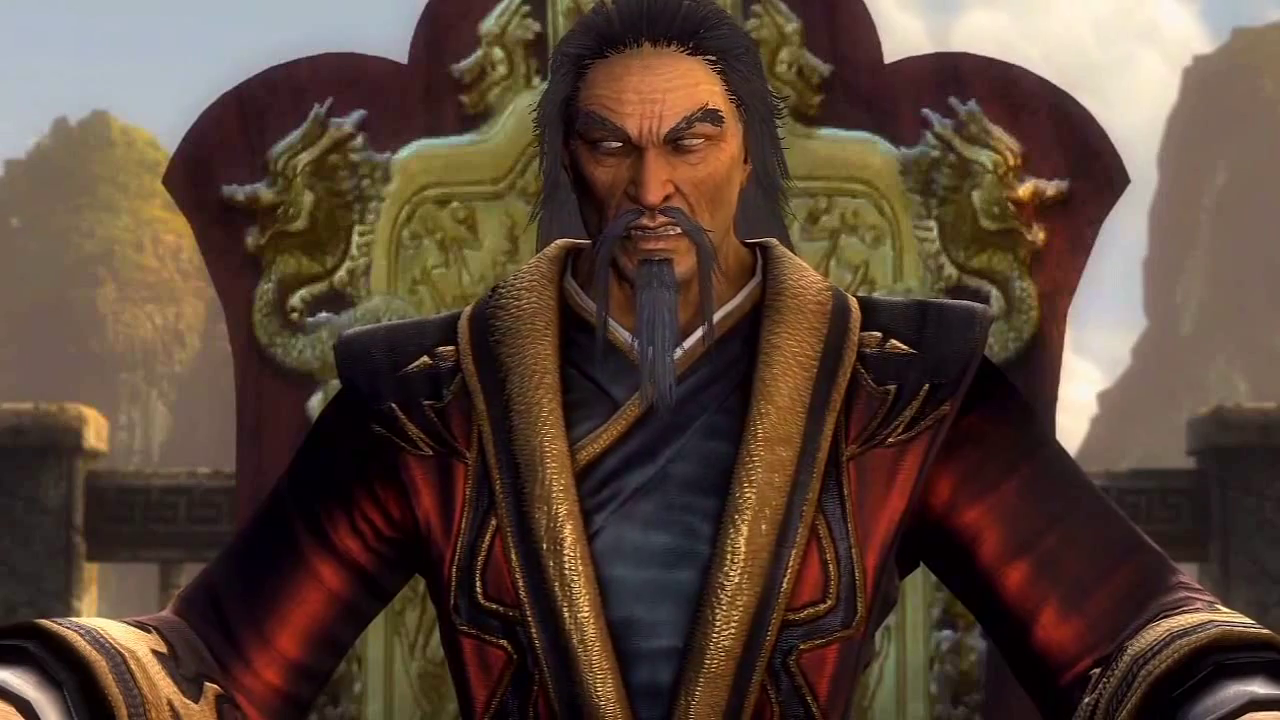


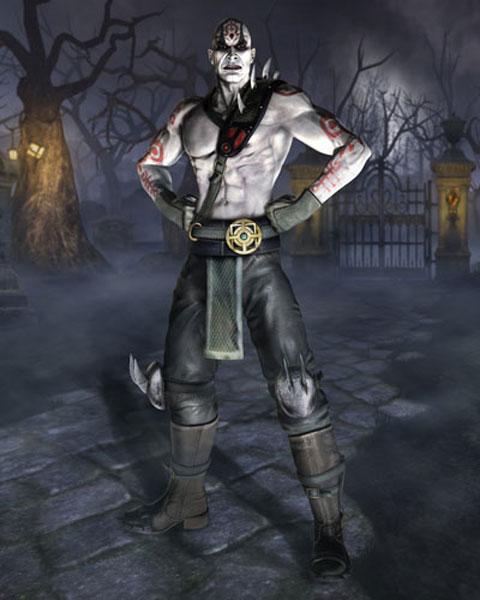


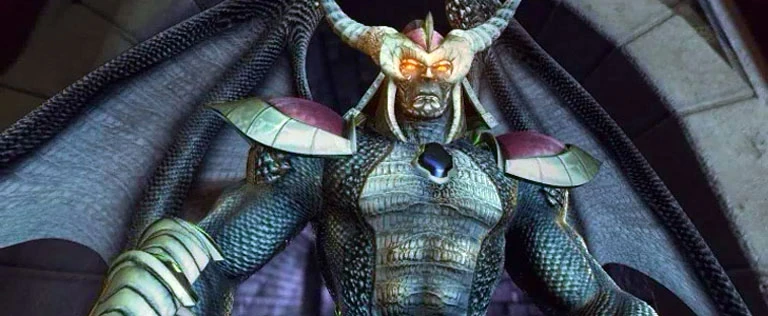


.gif/revision/latest?cb=20110606221424)

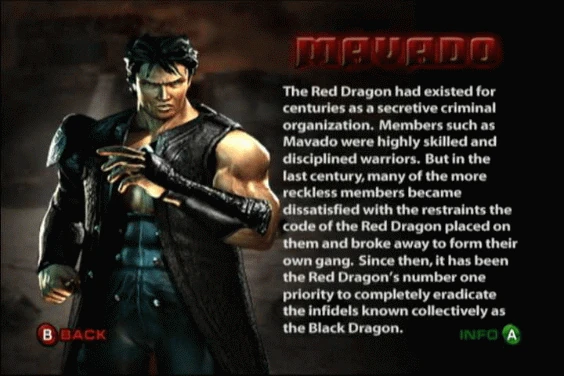
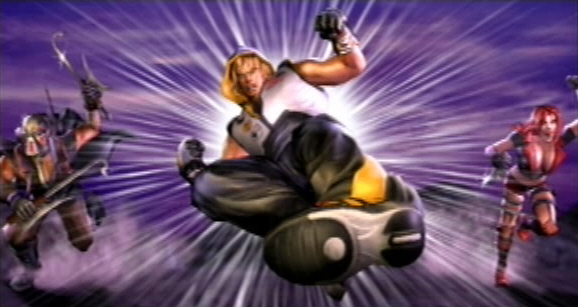

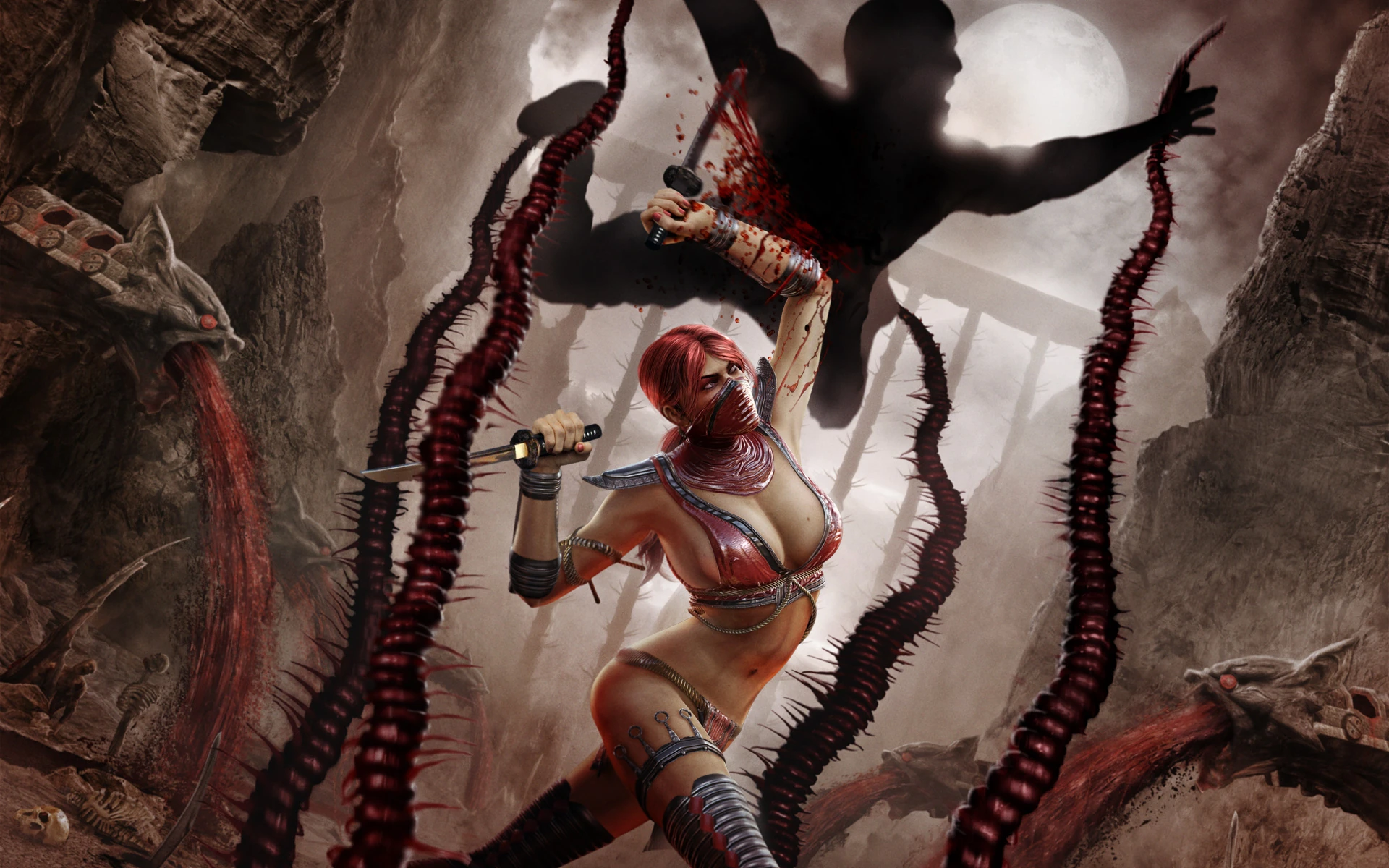
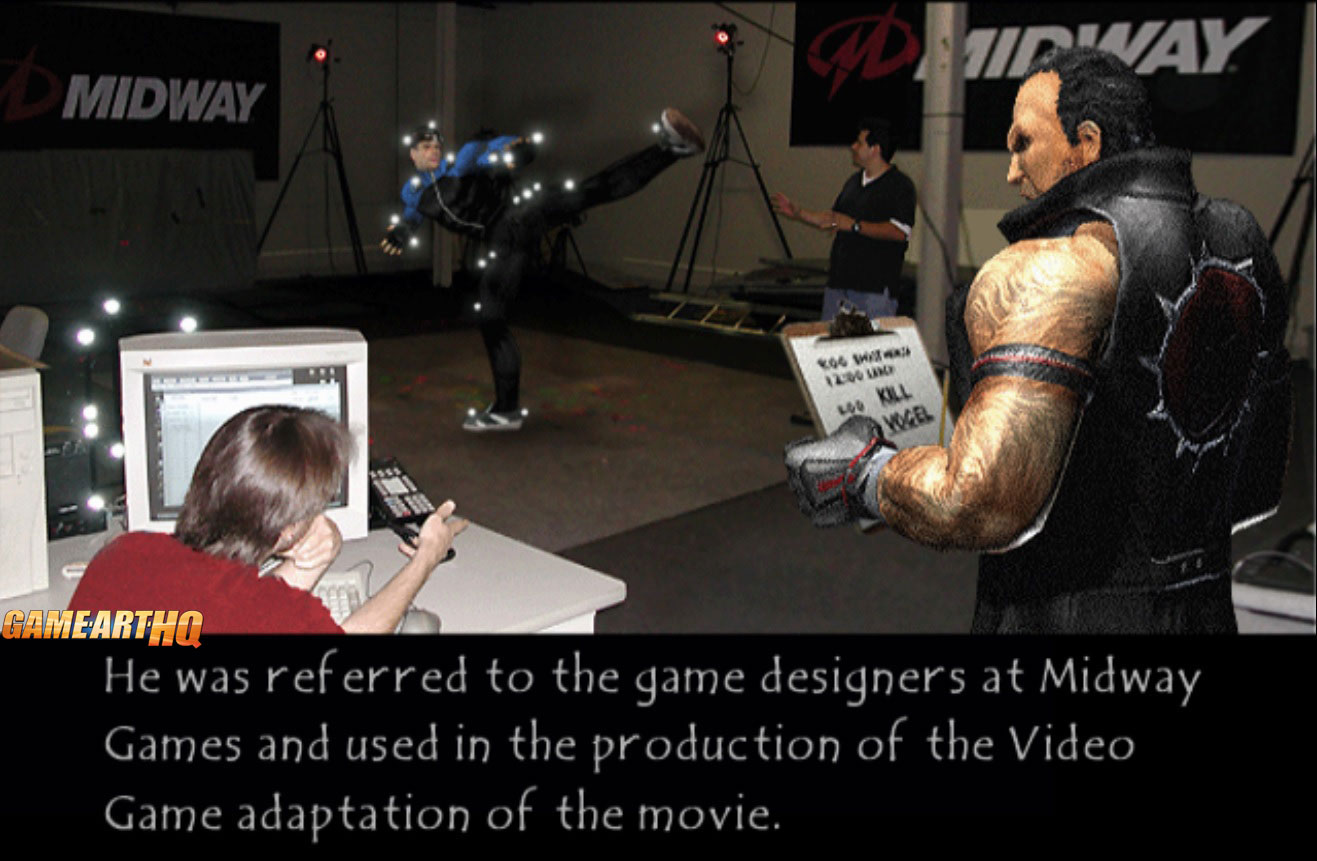

No comments:
Post a Comment